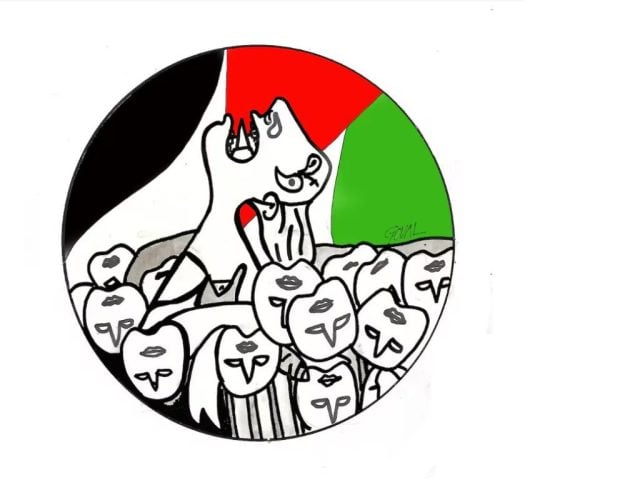According to the Government Media Office in Gaza (GMO), 730 days after the offensive began, the total number of people dead or missing has reached 76,639: 67,139 confirmed dead in hospitals and 9,500 still under the rubble or unaccounted for. Among the victims are more than 20,000 children and 12,500 women. Released to mark the second anniversary, these figures underscore the magnitude of a tragedy that is far from over.
The scale of destruction is also massive. Local authorities estimate “total destruction” at close to 90%. In parallel, independent physical damage assessments report that 78% of buildings have sustained damage and that most of the population has been displaced multiple times.
Government Media Office Report on the Gaza Strip (Palestine) by lahuanche
Israeli genocide in Gaza: hunger and blockade as weapons
Humanitarian assistance is insufficient and erratic. The executive director of the World Food Programme (WFP) said in late August that around 100 aid trucks enter per day, far below the 600 that were able to enter during the truce at the start of the year: “We are getting a bit more food in… but it is far from enough.” WFP continues to stress that it has food ready to distribute if access is permitted.
In the same vein, the UN has stated that the famine could have been prevented if aid had been allowed to flow without obstacles: “It is a famine we could have prevented, if we had been allowed… food is piling up at the borders due to Israel’s systematic obstruction,” said the United Nations humanitarian relief chief in August.
Violence against those seeking help compounds the crisis: the official tally in Gaza records 2,605 people killed and 19,124 injured while trying to access distribution centers or humanitarian “corridors.”
Health system at breaking point and mass displacement
The World Health Organization has reported consistently that the health system operates with reduced capacity, critically low supplies of medicines, and hospitals damaged or out of service; many facilities are only partially functional and under constant threat.
Internal displacement has reached extreme levels: reports from UNRWA and OCHA estimate that nearly 90% of the population—more than 1.9 million people—has been forced to flee multiple times, with no safe place to go.
International obligation: the ICJ and unfulfilled measures
On January 26, 2024, the International Court of Justice ordered Israel to prevent acts of genocide, ensure humanitarian assistance, and punish incitement. Nearly two years since the offensive began, human rights organizations say those measures have not been fully implemented on the ground.
More recently, the UN Human Rights Council’s Commission of Inquiry concluded that Israel has committed genocide in the Gaza Strip, reinforcing the legal framework used by various actors who describe the situation as a “genocide perpetrated by Israel.”
An enclave reduced to rubble
The material devastation spans everything from homes and schools to universities, roads, and water and electricity networks. Independent assessments describe an “ocean of ruins”: 78% of the built environment damaged and reconstruction timelines that could run for decades. In the meantime, entire families are surviving in tents or makeshift shelters without sanitation or basic services.
What now?
With the second anniversary falling on October 7, 2025, the humanitarian imperative is clear: unrestricted access to aid, protection of civilians, and effective compliance with the ICJ’s orders. Evidence compiled by UN agencies and humanitarian organizations, together with local official data, depicts a scenario in which hunger and blockade continue to be wielded as weapons against an exhausted population.


